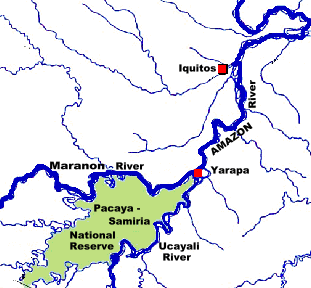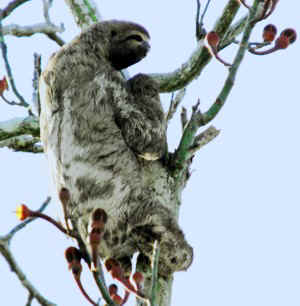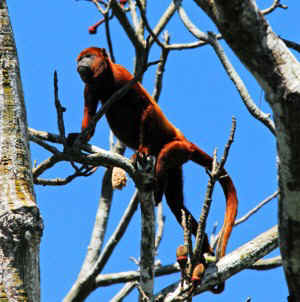 |
ABOUT THE
PACAYA-SAMARIA NATIONAL RESERVE: Located 100
miles west from Iquitos, this triangular shaped reserve lies between the Maranon and
Ucayali rivers, which intersect at the northeastern tip of the Reserve and mark what is
considered the Amazon River proper.
The Reserve is large enough to cover the state of New
Jersey. It has been protected since 1940 and declared a National Reserve in 1972 and
enlarged to its present size. It is the largest reserve in Peru, the second largest in the
Amazon and fourth largest in all of South America. It has an area of 8,042 square miles,
which represents 1.5% of the total surface of Peru.
Some quick facts about Pacaya
Samiria Reserve:
- 80 lakes, including Hatun Cocha, Pastococha, Shinguito,
Maldonado, Ungurahui, Yanayacu, Zapote, Yarina, Tamara, Cotococha, Achual, El Dorado
- There are 94 communities, 21 of them of the Cocama-Cocamilla
ethnic group. Around 42,000 people live in the Reserve, mostly along the edges as there
are only a few villages in the interior of the Reserve. Average family size 8 to 10
persons; main food staples are plantains, yucca and fish; thier houses are made from
materials found in the forest
- 102 species of mammals including 13 species of primates
including Capuchin Monkeys, Spider Monkeys, including the Black SPider Monkey,
Orange-chested Spider Monkey, Woolly Monkey and Howler Monkey, all considered endangered.
- 449 species of birds including five of the eight species of
Macaw living in Peru, and the prehistoric-looking Hoatzin.
- 69 species of reptiles
- 58 species of amphibians
- 256 species of fish
- 1,204 species of plants
- Threatened or endangered species include the Jaguar (Felix
oca), the black alligator, giant river otter, the manatee, four different species of
primates and two different species of turtles.
An essential element that is characteristic of this
protected area is the cycle of crescent and reflux of the rivers.
- CRESCENT: October-April - rainy season and
the waters of the rivers and creeks increase, flooding a large area of the
rainforest.During this time animals find shelter in the highest areas, where water never
reaches. During this period the launch boats venture deeper into the flooded forests
- REFLUX: May-September - rain decreases
dramatically and the level of the water falls progressively, reaching its minimum in
August. This seasonal change and the predominantly flat terrain makes a landscape full of
small rivers, creeks and lagoons, offering the opportunity to observe a large number of
aquatic birds catching fish concentrated in these areas. During this time large beaches
also form in the main rivers, and are used by settlers to grow rice, beans, peanuts and
other crops, and also by two species of turtles to lay their eggs.
|





